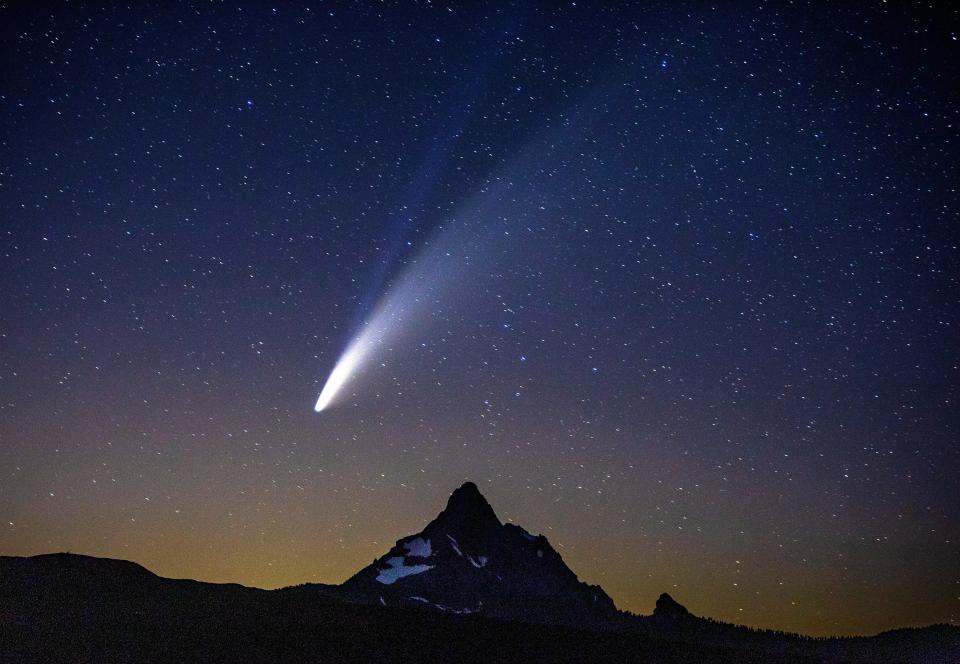Two meteor showers should be visible early Tuesday from Portland to Eugene
A 95% full moon won't be the only bright celestial object in tonight's sky. Willamette Valley residents from Portland to Eugene will have a shot at seeing meteor showers with two scheduled to peak early Tuesday.
Conditions are ripe for viewing fire in the sky, with no cloud cover expected tonight in the valley, according to National Weather Service meteorologist Daniel Hartsock.
What meteor showers are happening tonight?
There are three ongoing meteor showers. The Southern Delta Aquariids, Alpha Capricornids and Perseids showers are all active in July and August. Southern Delta Aquariids and Alpha Capricornids are both at their peaks, while Perseids will reach its most visible point later on August 12 and 13.

Meteor showers happen when the earth passes through a trail of debris left by a comet or asteroid, creating bright shooting stars across the night sky.
While neither Alpha Capricornids nor Southern Delta Aquariids are known for their length, brilliance or output of fireballs, they're still well worth seeing. The two get their names from popular constellations near the point in the sky they radiate from: Aquarius and Capricornus.
Southern Delta Aquariids
Suspected by NASA to be leftover debris and particles from the comet 96P Machholz, the Southern Delta Aquariids offer some 20 fireballs per hour, each soaring through space at a whopping 25 miles per second.
While numerous, these meteors can be tough to spot if the moon is visible because they are faint and often lack trains and fireballs. According to the NASA website, this shower can be seen again after its peak, during the peak of the Perseids mid-August.
You will know you've spotted a Southern Delta Aquariid if the meteor is coming from the direction of the constellation Aquarius with its radiant in the southern part of the sky.
Alpha Capricornids
While it boasts a smaller output of five to seven meteors per hour, the Alpha Capricornus is much brighter and easier seen by the naked eye than the Southern Delta Aquariids. The shower, which is made up of leftover particles from the 169P/NEAT comet, has the potential to present fire balls that outshine the moon.
According to the American Meteor Society Website, The Alpha Capricornus showers move at a rate of 14 miles per second, according to the American Meteor Society website.
When and where to spot meteors in the Willamette Valley
You'll need to be a night owl if you want to see these meteors. The best time to look for meteors is in the early morning hours, from 2 to 4 a.m. local time.
NASA recommends finding an area away from city and street lights, and laying back on a lawn chair, sleeping bag or blanket to take as much of the night sky as possible.
With smoke haze a growing factor in the Willamette Valley due to wildfires, height is your friend when it comes to seeing meteor showers. Try finding an unobscured, dark and elevated area to boost your odds.
Once you've found a comfortable and dark spot, prepare to settle in and wait, as the showers can often be seen until dawn, according to the NASA website.
~The Arizona Republic contributed to this story.
Charles Gearing is a breaking news and public safety reporter from the Eugene Register-Guard. He may be reached at cgearing@gannett.com or at (708)262-7626.
This article originally appeared on Salem Statesman Journal: Two meteor showers visible Willamette Valley from Portland to Eugene

